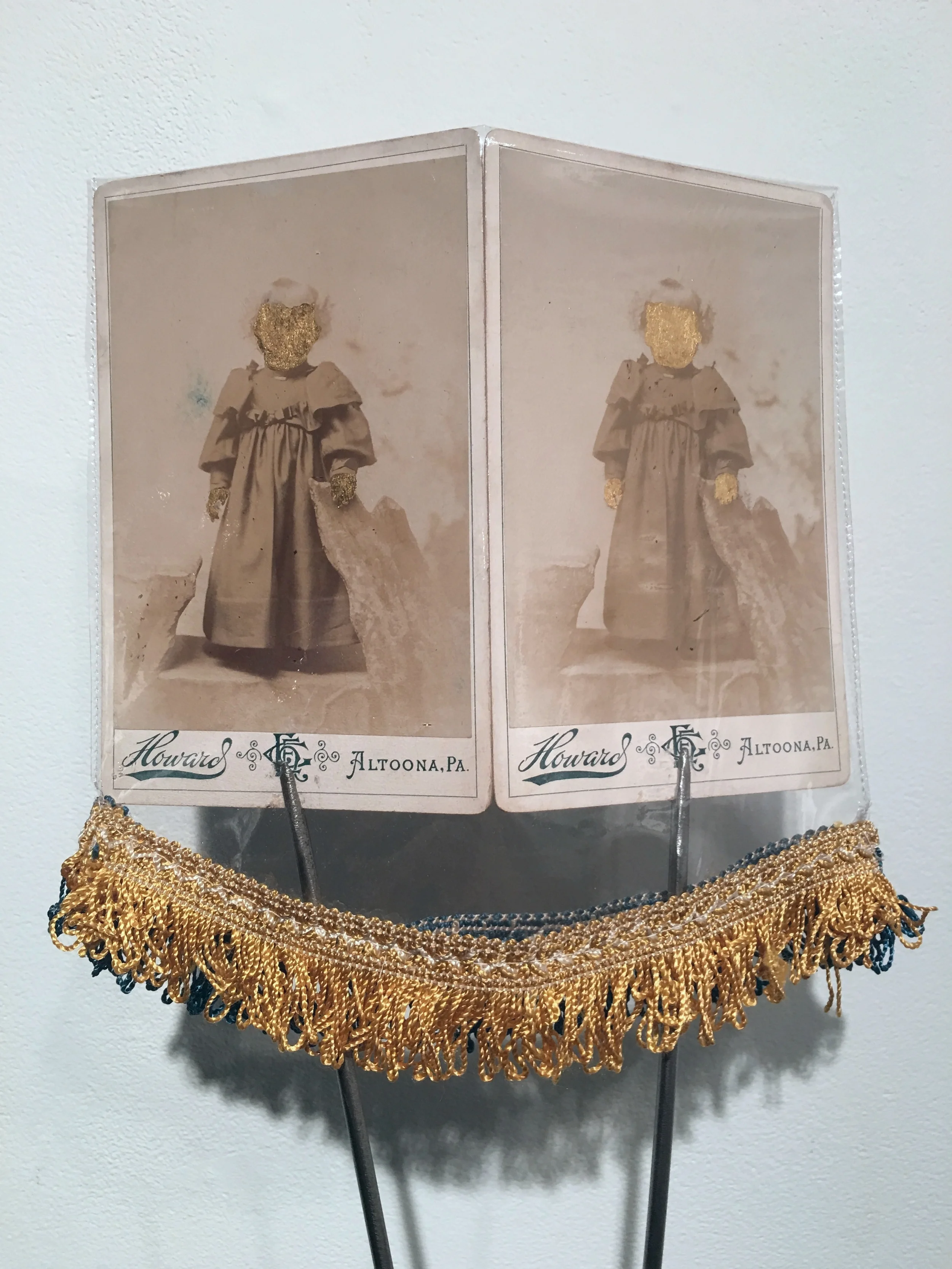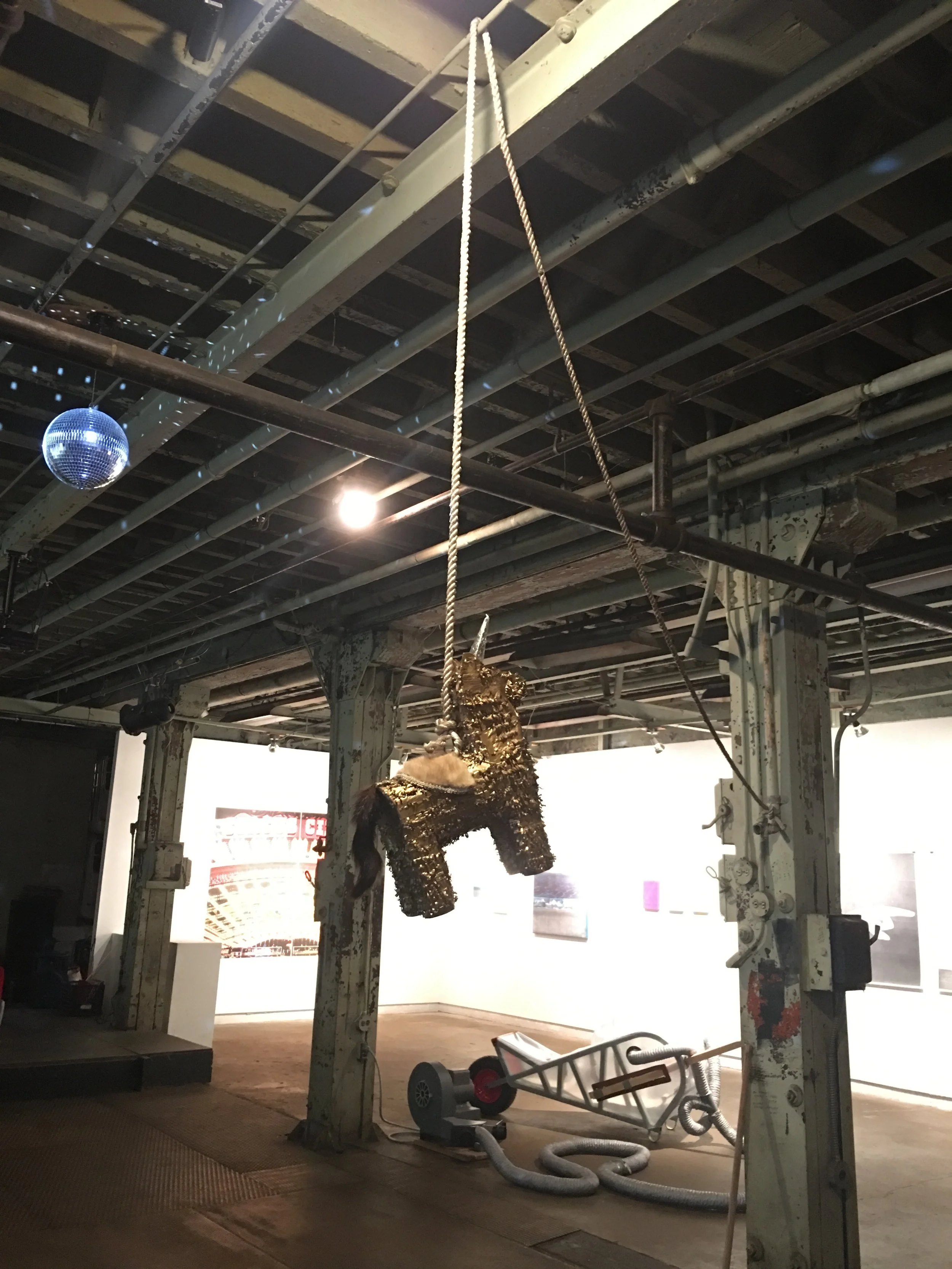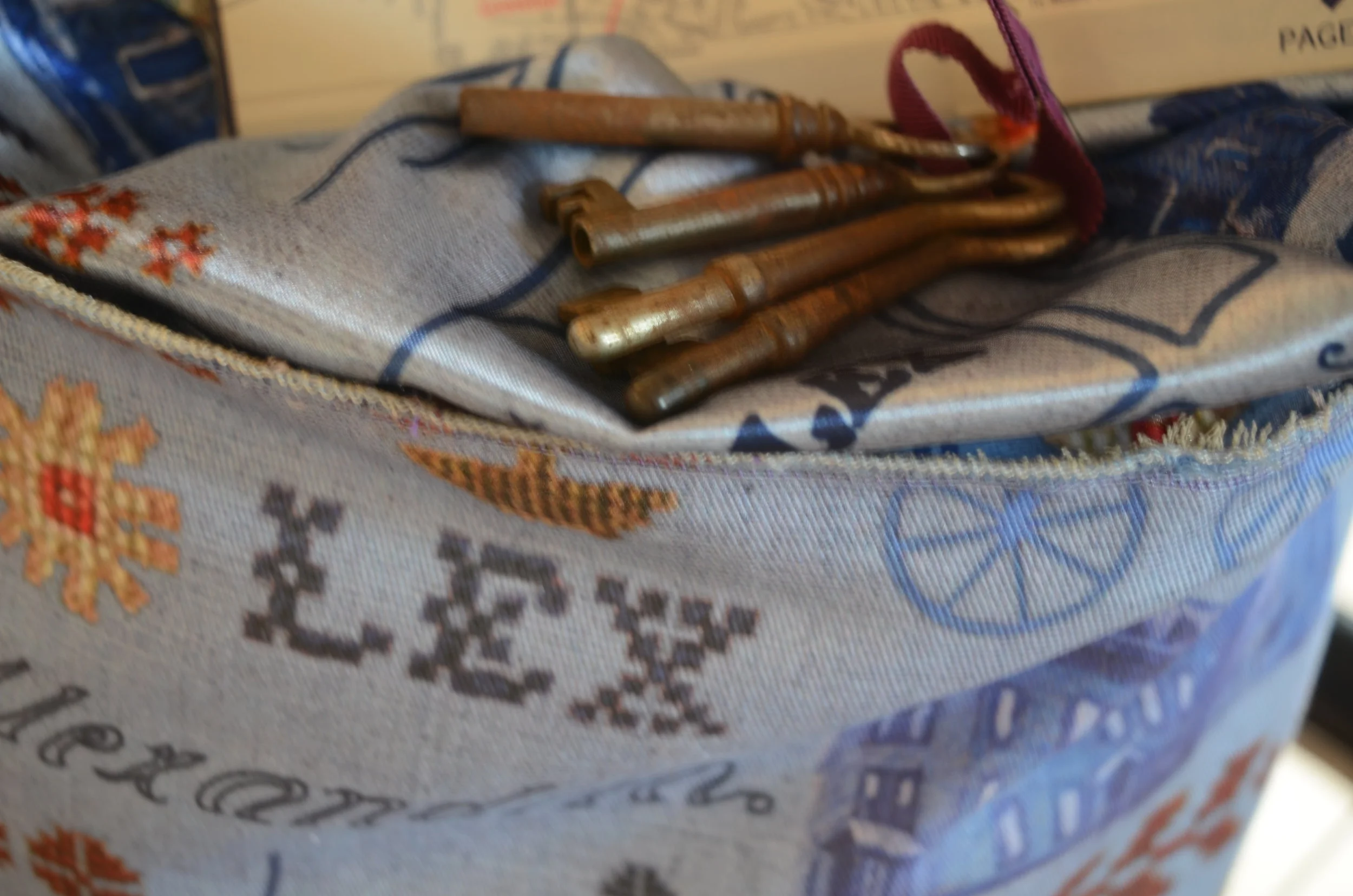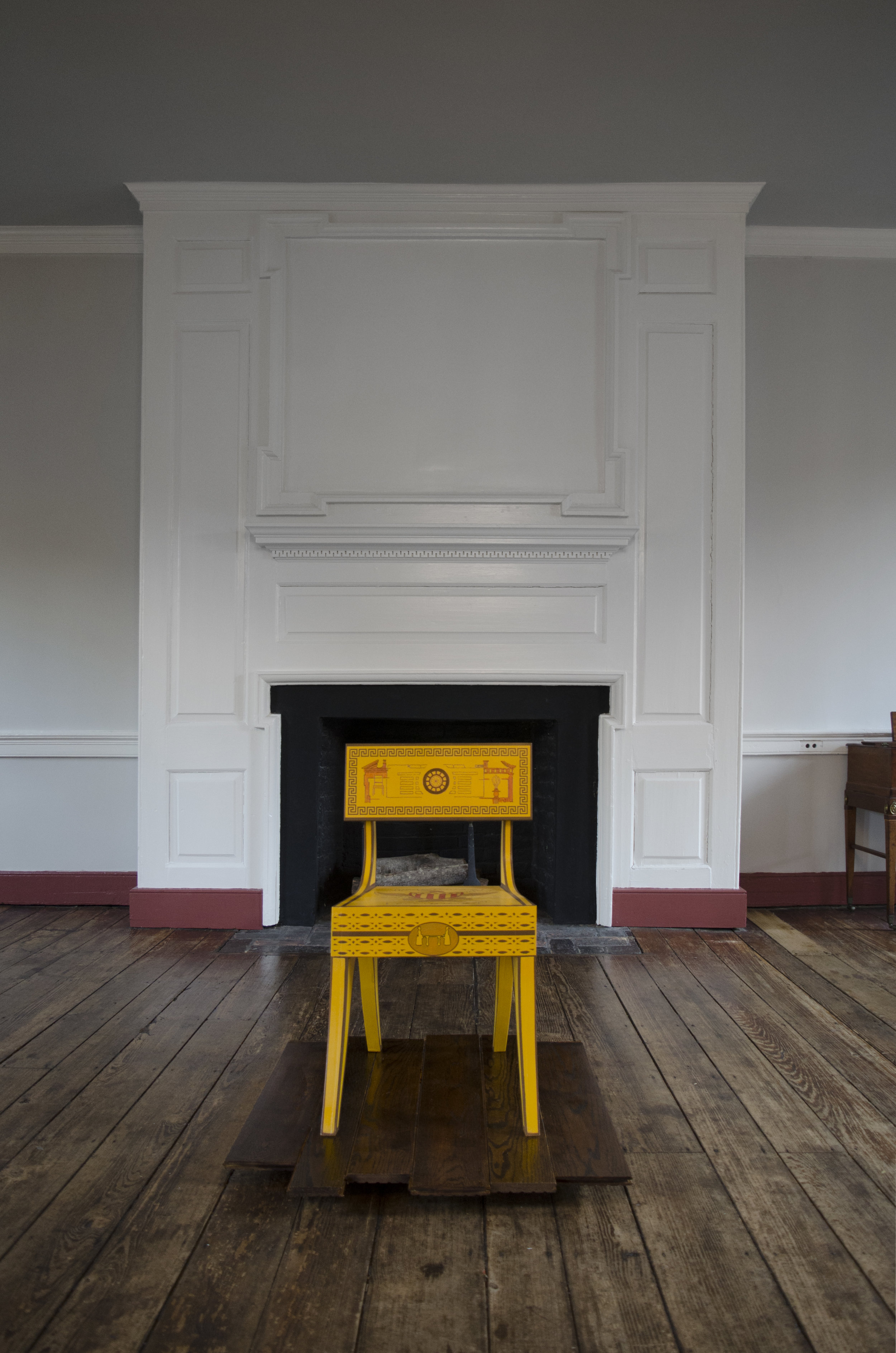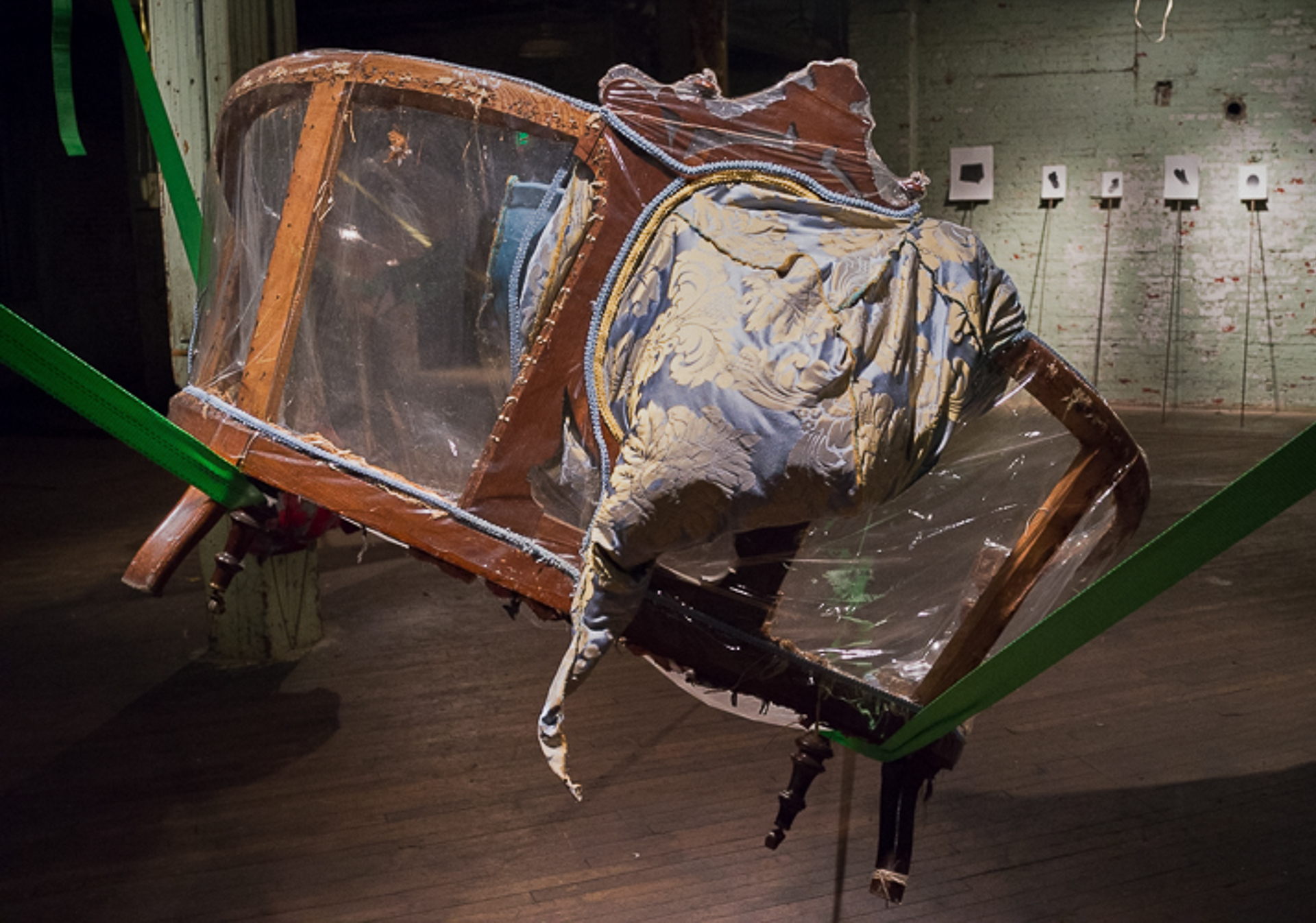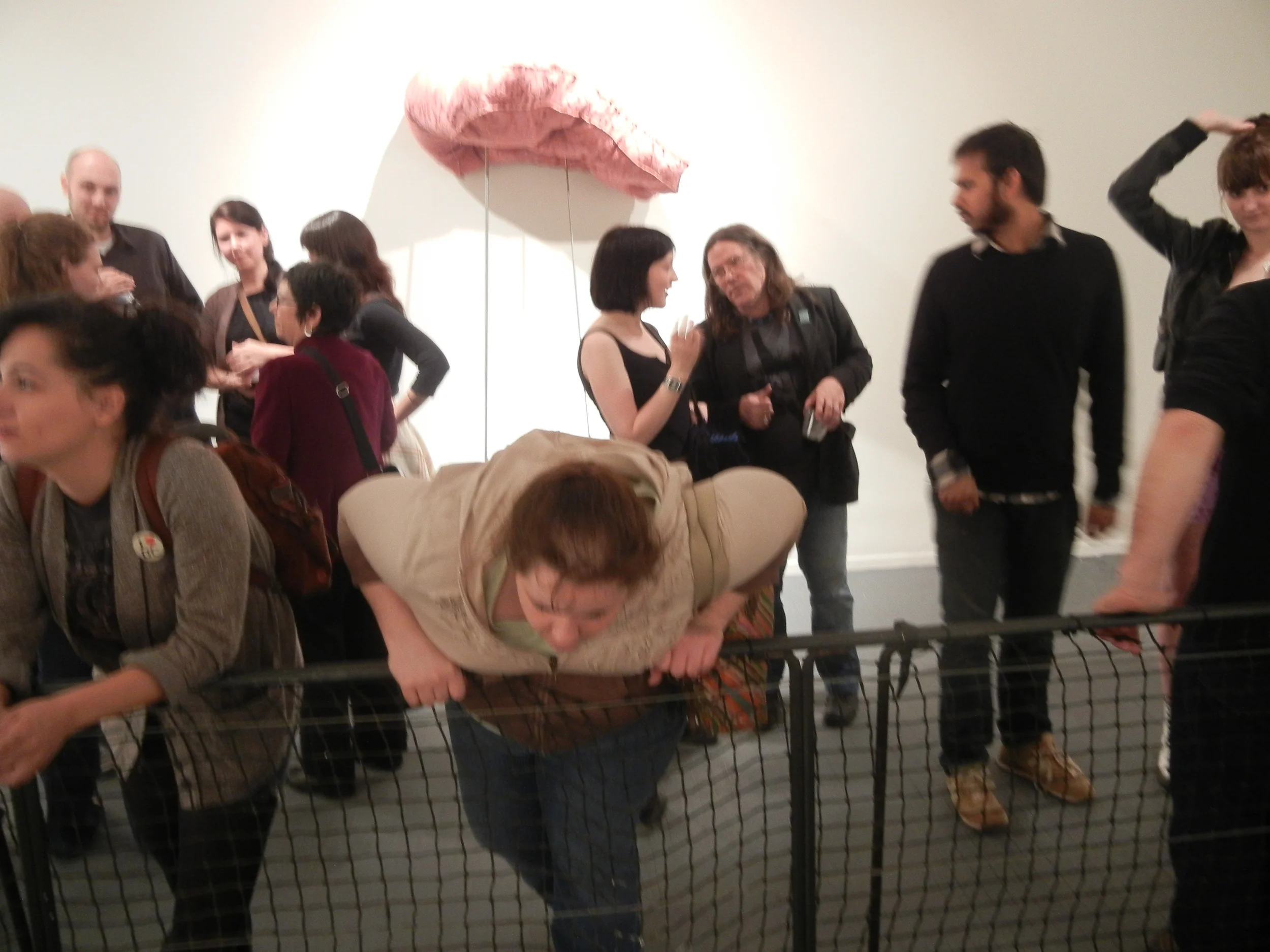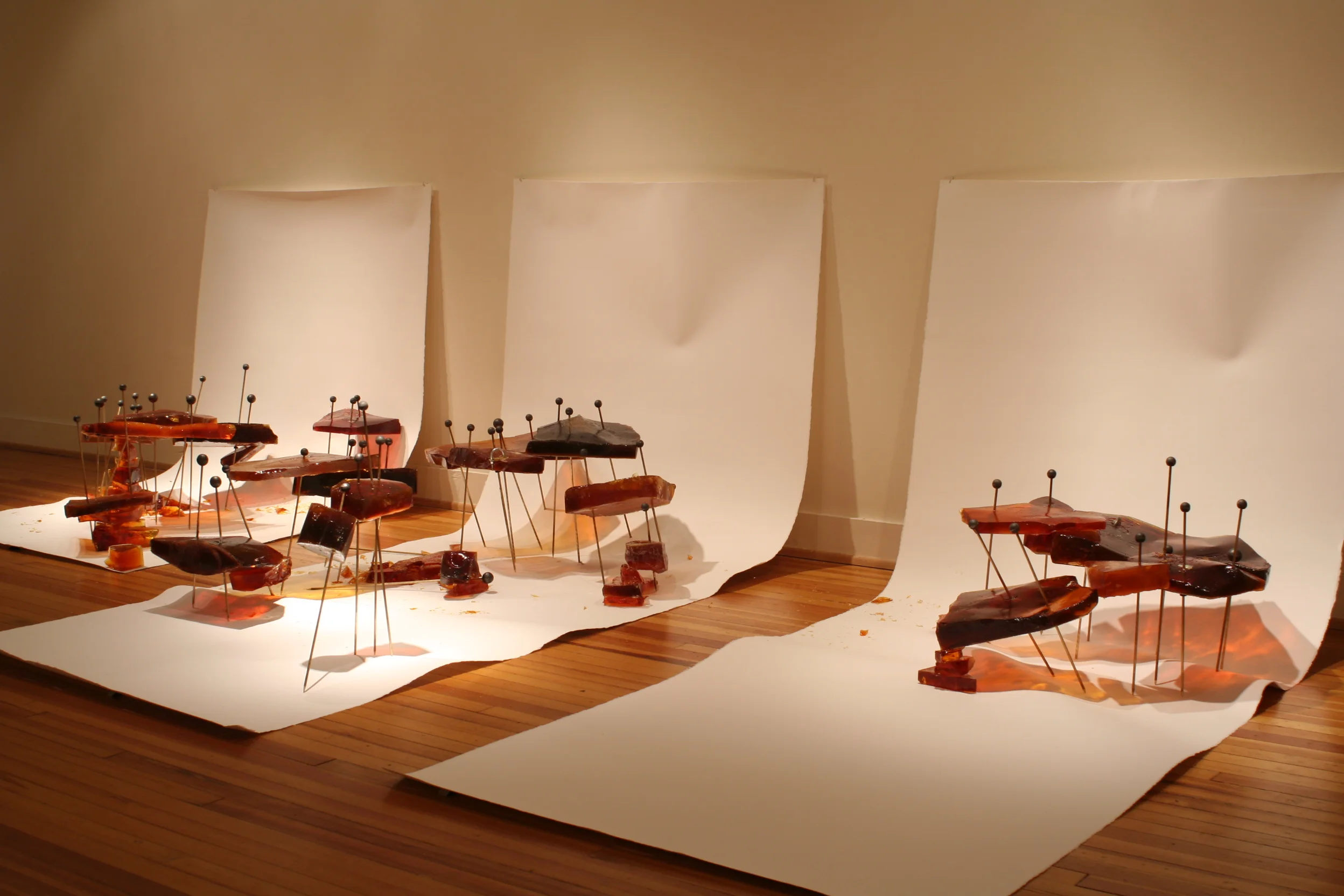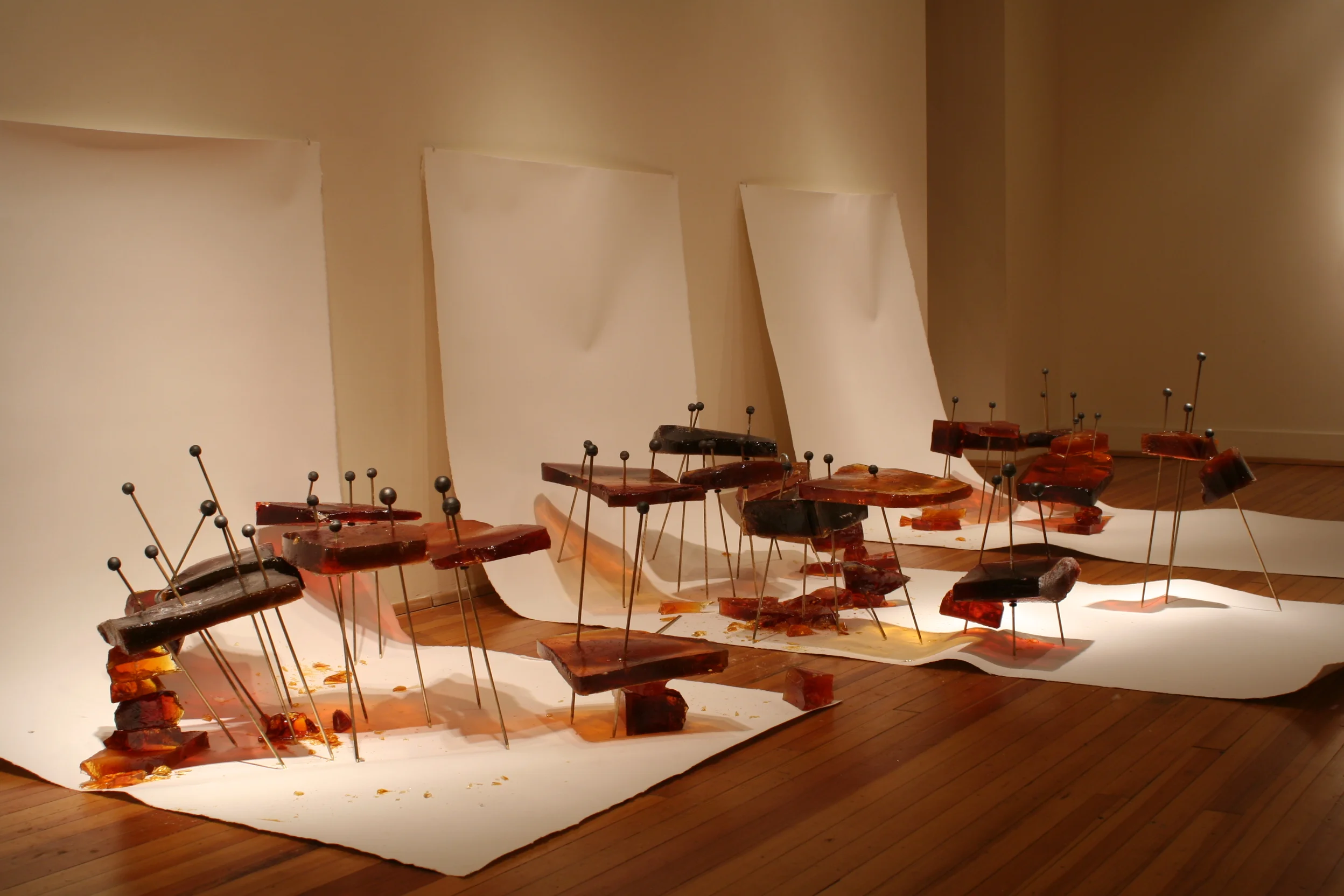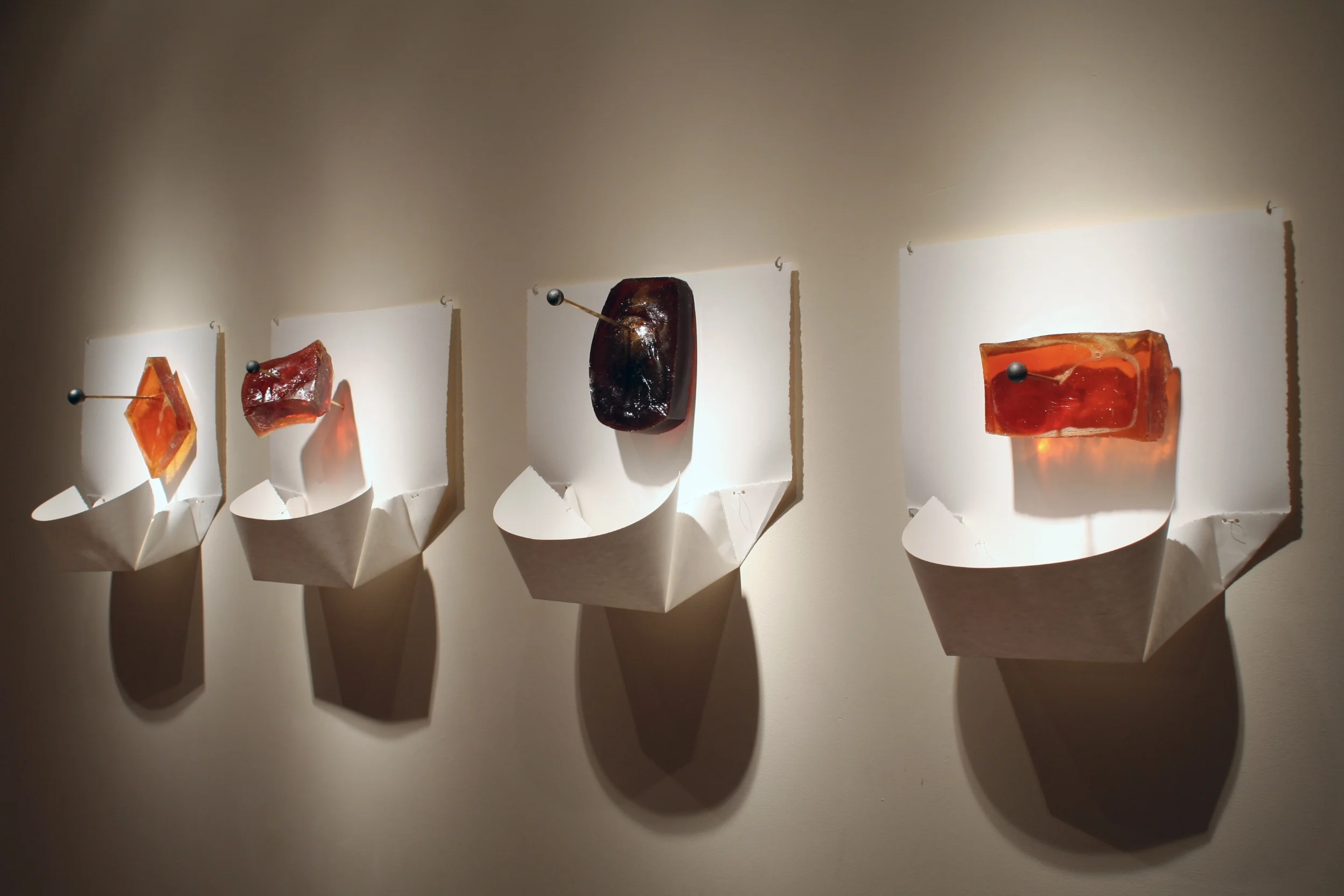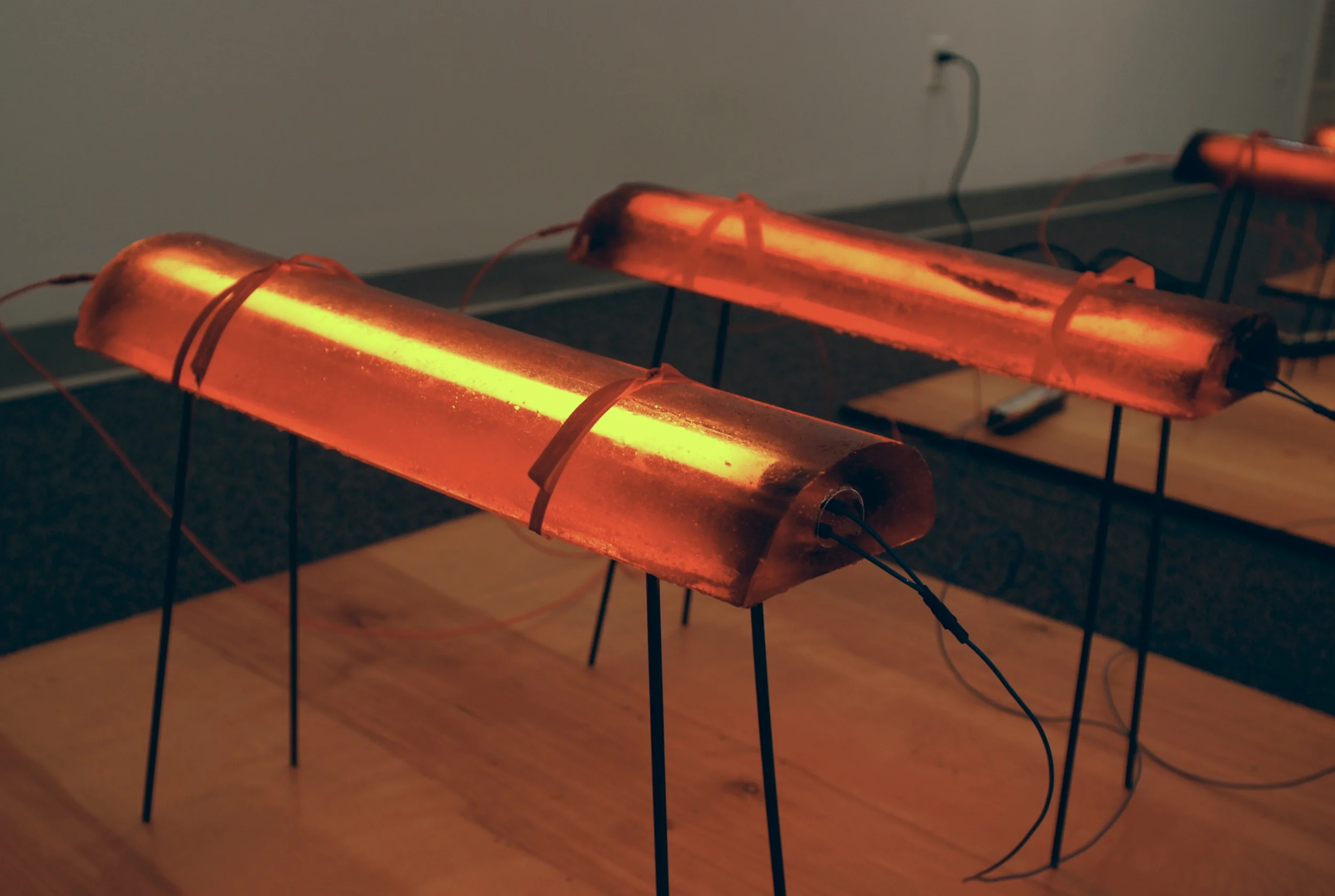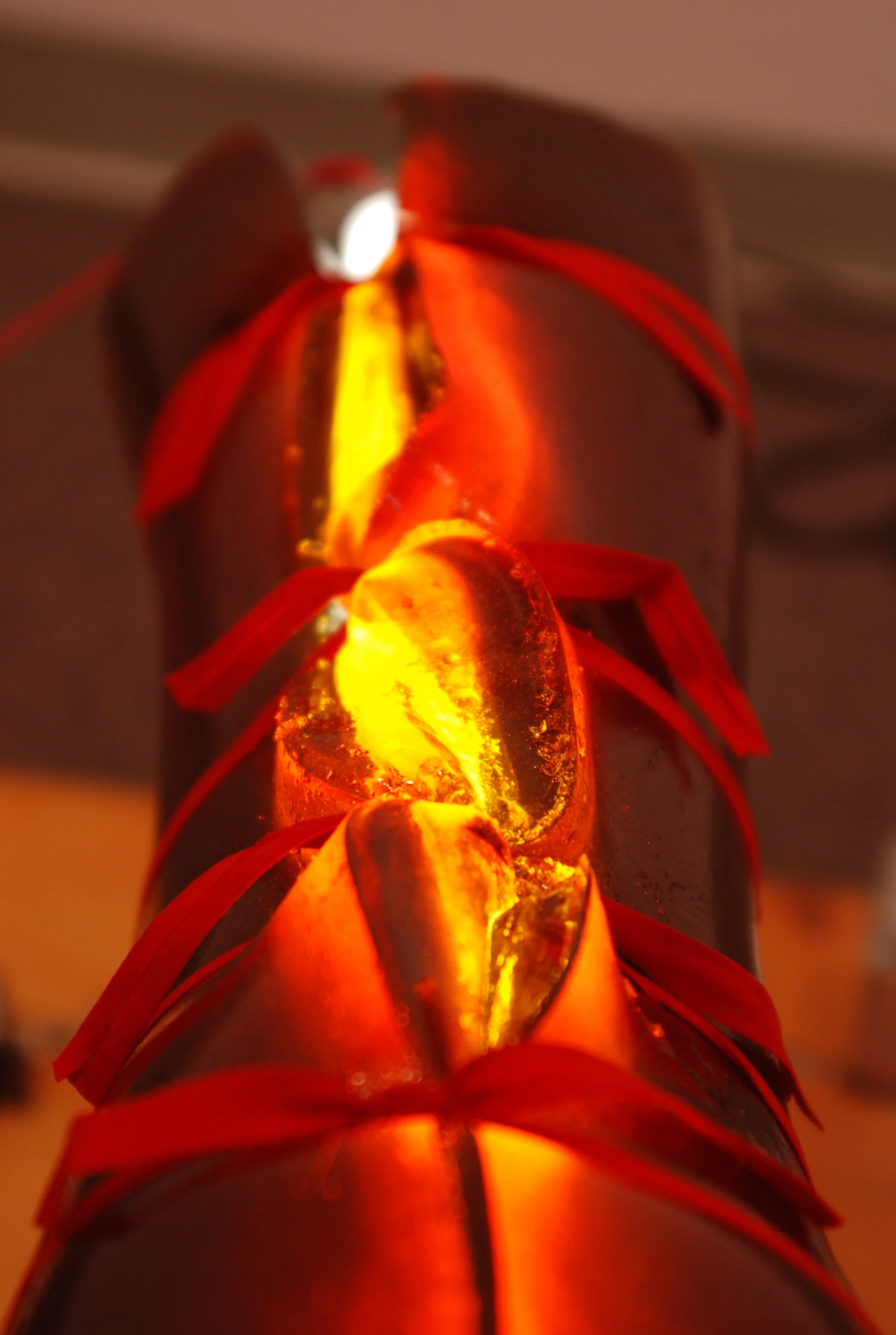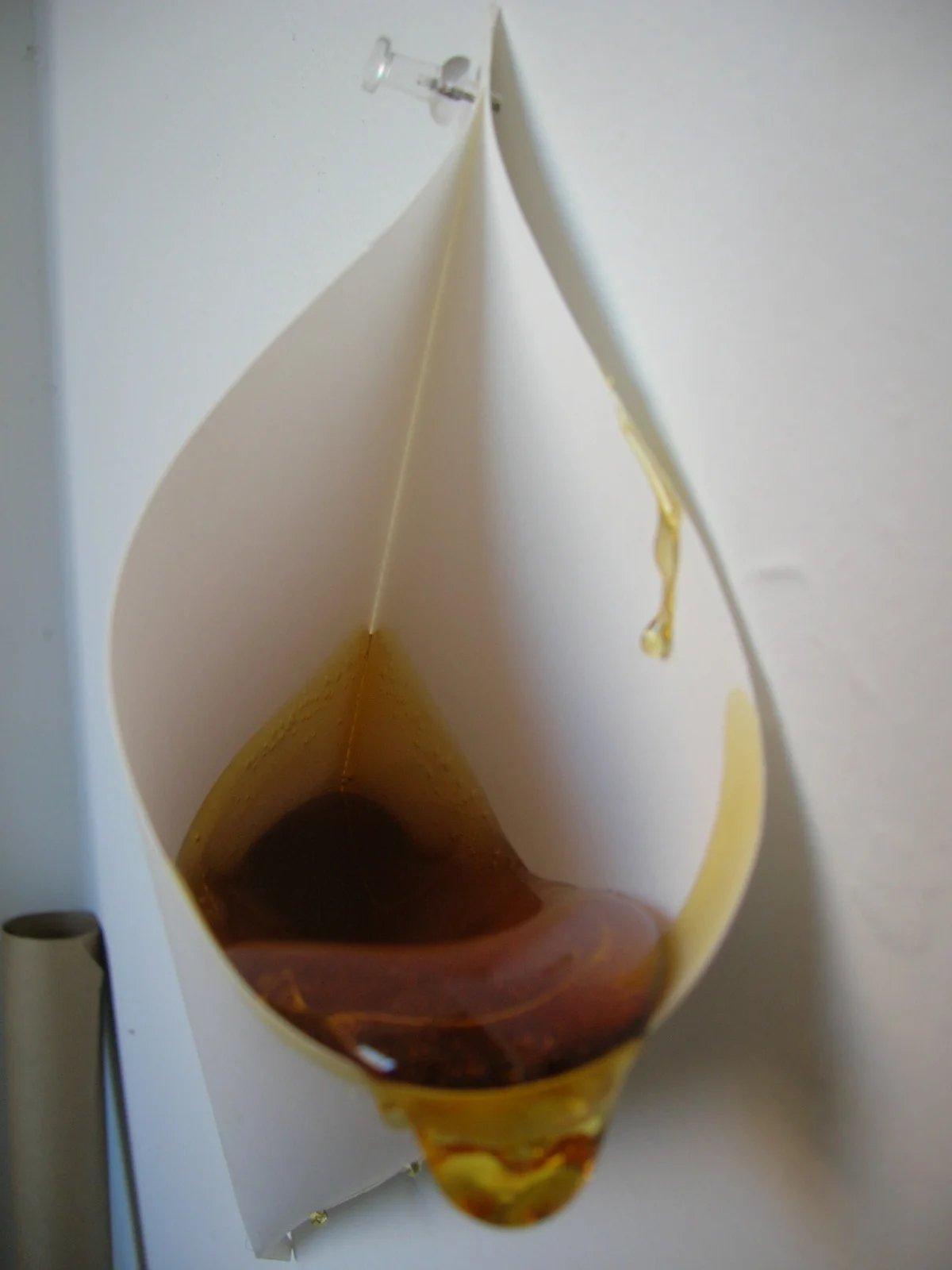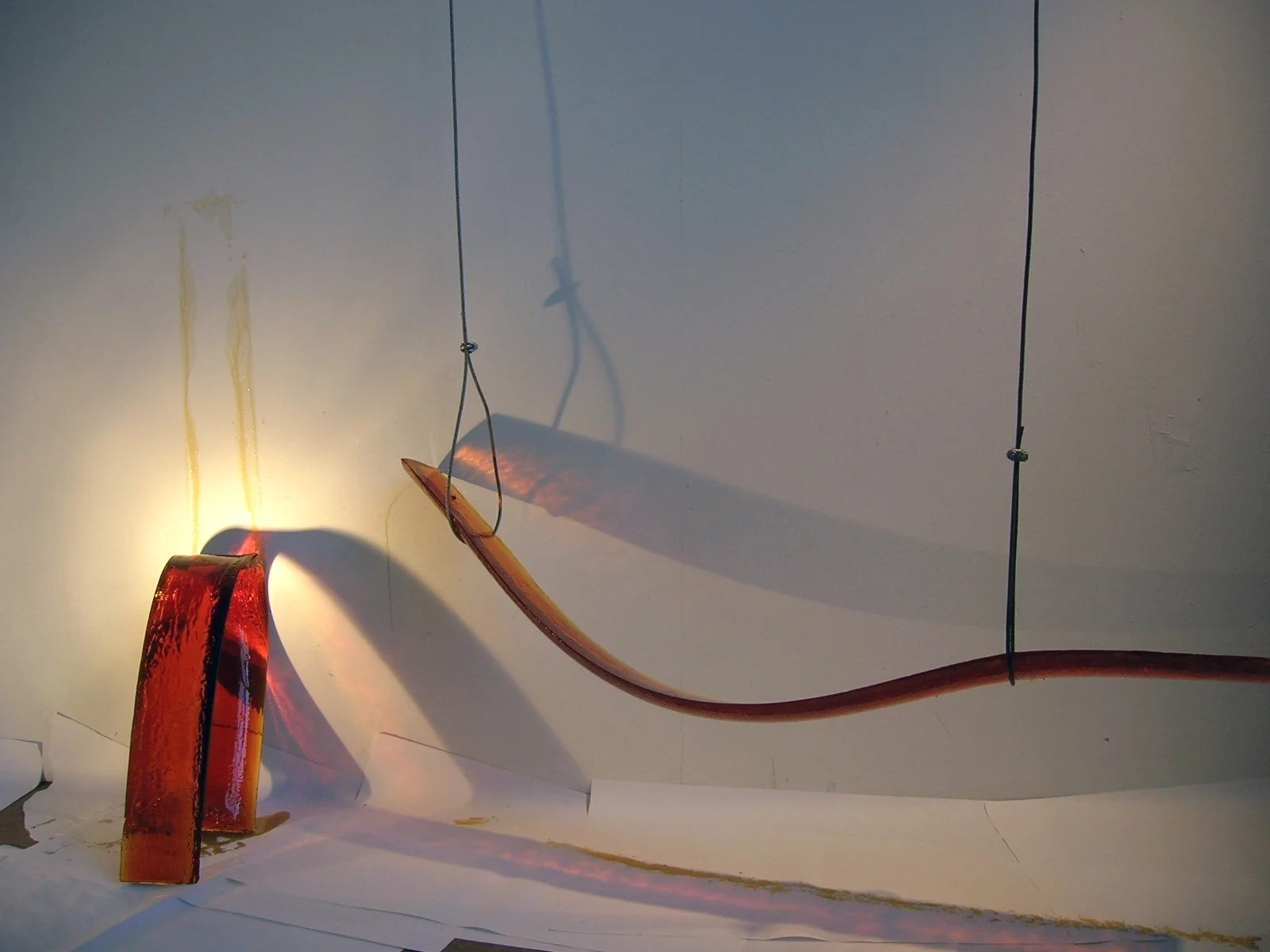At Gadsby’s Tavern Museum, Alexandria, Virginia, Summer 2017
Artists Stewart Watson and Lauren Frances Adams presented Centennial of the Everyday, a series of interventions created throughout the historic Gadsby’s Tavern Museum in the heart of Oldtown Alexandria, VA. These works of art reflect the artists’ extensive research on the history of women, enslaved peoples, and anonymous citizens in Alexandria whose stories are rarely told in light of the typical fêting of historically famous individuals, such as America’s Founding Fathers. Living community members are featured who have a relationship to the Gadsby Tavern building or John Gadsby himself (such as descendants of John Gadsby, a descendant of Nancy Syphax -one of the women enslaved by John Gadsby, and an immigrant who has worked at the Tavern restaurant for two decades).
Encompassing familiar domestic materials such as furniture, stoneware, and textiles, Watson and Adams evocatively document period-specific historic ephemera (such as architecture, newspaper reports, poetry, portraiture of anonymous women, and pattern books) in new contexts. Animated video, the Female Stranger’s canopy bedding, and a sculptural reversal of the ‘Alexandria Ballroom’ acknowledging the centennial of its acquisition by the Metropolitan Museum in New York, comprise just a few of the works which will be on display.
The artists weave themes of anonymity, loss, connectivity and the fragility of memory in museum and public record archives alongside the lived stories of present-day Alexandrians. Interpretations of quotidian life are upended from the defined categories of history, resulting in a display that negotiates the contradictions of the museum’s precise timeline within and against the region’s rich untold diversity.
QUOTE FROM THE ARTISTS, APRIL 2017:
“We are thrilled to present our site-specific works related to Gadsby’s Tavern at the museum this summer. Our work foregrounds the under-appreciated narratives of many peoples from Alexandria’s history, resulting in sculptures and installations that evoke the fragility of memory. We hope that our project will encourage visitors to the museum to see history and identity in a new light.”
More details about the ‘Met Reversal’:
The artists researched, identified, and invited 7 subjects to collaborate with in creating the sculptural installation of chairs in the Gadsby Tavern ballroom, with a special emphasis on working with women and people of color. Interviews were conducted in the spirit of identifying personal stories of place and family history, so as to connect the interviewees to broader themes of belonging, work, identity, and genealogy. Most interviewees live and work in Virginia, with the exception of two, who are descendants of John Gadsby now living in Philadelphia and New York (reflecting the connection to Gadsby’s stagecoach-era east coast travel lines). The presentation of chairs in the ballroom is a direct acknowledgement of the acquisition of the original 18th century woodwork by Thomas Fortune Ryan for The Metropolitan Museum in 1917 for installation in the Period Rooms of the American Wing. This centennial is celebrated in a display of altered furniture acquired from the interviewees, similar to how the Met Museum uses the ‘Alexandria Ballroom’ as a staged backdrop for the fine domestic furnishings of the Federal period. The artists’ reversal is a framework that points to the limitations of the museum space to ‘snap to life’. By actively including living, everyday people and their stories, the archival becomes interactive. Through interviews, multiple visits, and the connecting of these interviewees with Gadsby’s Museum, the artists render these individuals’ stories into fantastical and inventive sculptural objects that emphasize the extraordinary within the conventional, and the personal within the universal.
images by Lauren F Adams, Stewart Watson, and Vince Lupo





















































































